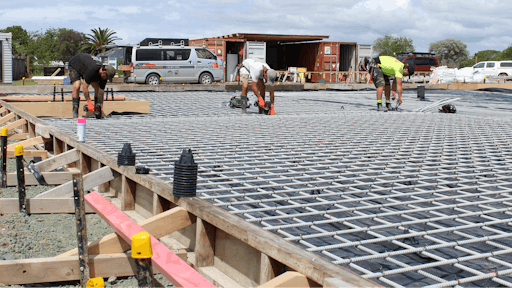How Composites are Altering the Landscape of Construction Materials
How Composites are Altering the Landscape of Construction Materials
Blog Article
Unlocking the Ecological Advantages of Recycled Compounds in Construction and Style
In the realm of construction and layout, the usage of recycled composites holds considerable promise for improving sustainability methods and lowering ecological influence. The shift towards an extra lasting future in these markets pivots on opening the full potential of recycled composites.

Environmental Influence Reduction
The reduction of environmental influence through using recycled compounds in construction and style plays a crucial function in lasting practices. By incorporating recycled composites into building products, the construction market can significantly decrease its carbon footprint and add to a much more green future. These sustainable products, made from repurposed plastics, timber fibers, or various other recycled aspects, use a viable alternative to traditional building and construction materials without compromising on top quality or longevity.
Recycled composites help divert waste from landfills and reduce the demand for removing resources, thus saving natural deposits. Furthermore, the production process of these compounds commonly consumes much less power and discharges less greenhouse gases contrasted to producing virgin materials (composites). This change towards using recycled compounds not just minimizes environmental injury but additionally promotes a round economic climate by urging the reuse of products that would otherwise be discarded
Waste Minimization
With a concentrate on minimizing waste in construction and layout, the integration of recycled composites provides a sustainable remedy to minimize ecological impact. Waste reduction is an important element of lasting practices, and using recycled compounds provides a chance to achieve this goal properly. By utilizing materials that have actually already served their initial function, such as recycled plastics or recovered wood fibers, the construction and design markets can dramatically reduce the amount of waste created and sent to landfills.
Recycled compounds have the possible to draw away substantial amounts of waste from traditional disposal approaches, adding to a more circular economic climate where sources are utilized effectively. Furthermore, the production process of recycled composites commonly consumes much less power and produces less emissions contrasted to virgin materials, additionally minimizing the ecological footprint of building and design tasks.
Applying waste reduction strategies via the incorporation of recycled compounds not only aids in preserving natural resources yet likewise advertises a more lasting technique to structure and creating for a greener future.
Energy Preservation
Incorporating recycled compounds not only lessens waste in building and construction and layout but likewise plays a vital duty in improving energy preservation methods within the market. The usage of recycled compounds in building and construction can substantially add to power conservation with different methods. The manufacturing of virgin materials generally requires considerable power inputs, whereas making use of recycled composites takes in less energy, thus lowering general energy usage. Additionally, including recycled composites can add to far better insulation buildings in structures, reducing the need for extreme home heating or air conditioning, and subsequently decreasing energy use for environment control. In addition, the light-weight nature of many recycled compounds can result in lighter structures, requiring much less energy for transportation and installment. By advertising making use of recycled composites in building and construction and design, the market can make significant strides in the direction of accomplishing power effectiveness and lowering its carbon impact, eventually contributing to a much more lasting developed setting.
Carbon Footprint Decrease
Enhancing sustainability practices via the use of recycled compounds in building and style significantly lowers the carbon impact of the industry. By integrating recycled products right into the manufacturing of compounds, the demand for virgin resources decreases, resulting in lower power usage and greenhouse gas exhausts related to standard production processes. This decrease in carbon footprint is important in combating climate adjustment and advertising a more eco-friendly approach to construction and style.
Additionally, the usage of recycled composites additionally assists in diverting waste from land fills, therefore mitigating the ecological impact of disposal and advertising a circular economic climate. her latest blog The carbon footprint decrease accomplished via the fostering of recycled composites straightens with the global press in the direction of sustainable methods and the decrease of industrial discharges. It showcases a commitment to accountable resource management and a shift in the direction of greener choices in the construction and style sectors. Ultimately, by prioritizing the assimilation of recycled composites, the industry can make substantial strides in decreasing its carbon footprint and adding to an extra lasting future.
Sustainable Future
The integration of recycled composites in building and construction and style not only addresses prompt environmental problems but also lays a solid structure for a lasting future in the industry. By incorporating recycled compounds right into structure materials and products, the construction and design markets can significantly reduce their reliance on virgin sources, bring about an extra circular economic climate. This change towards sustainability is vital for reducing the environmental impact of typical construction techniques, which frequently lead to high degrees of waste generation and source exhaustion.

Final Thought
In final thought, recycled compounds provide significant environmental benefits in building and construction and style by reducing ecological impact, reducing waste, saving energy, reducing carbon impact, and promoting a sustainable future. Embracing making use of recycled compounds can add to a more environmentally-friendly method to building and design, eventually bring about an extra lasting and greener future for all.
The decrease of ecological influence via the use of recycled composites in building and construction and design plays an important function in sustainable techniques.With a focus on minimizing waste in building and layout, the combination of recycled compounds supplies a lasting service to minimize ecological influence. By advertising the use of recycled compounds in construction and layout, the industry can make considerable strides towards attaining power performance and reducing its carbon impact, inevitably adding to a more lasting developed environment.

Report this page